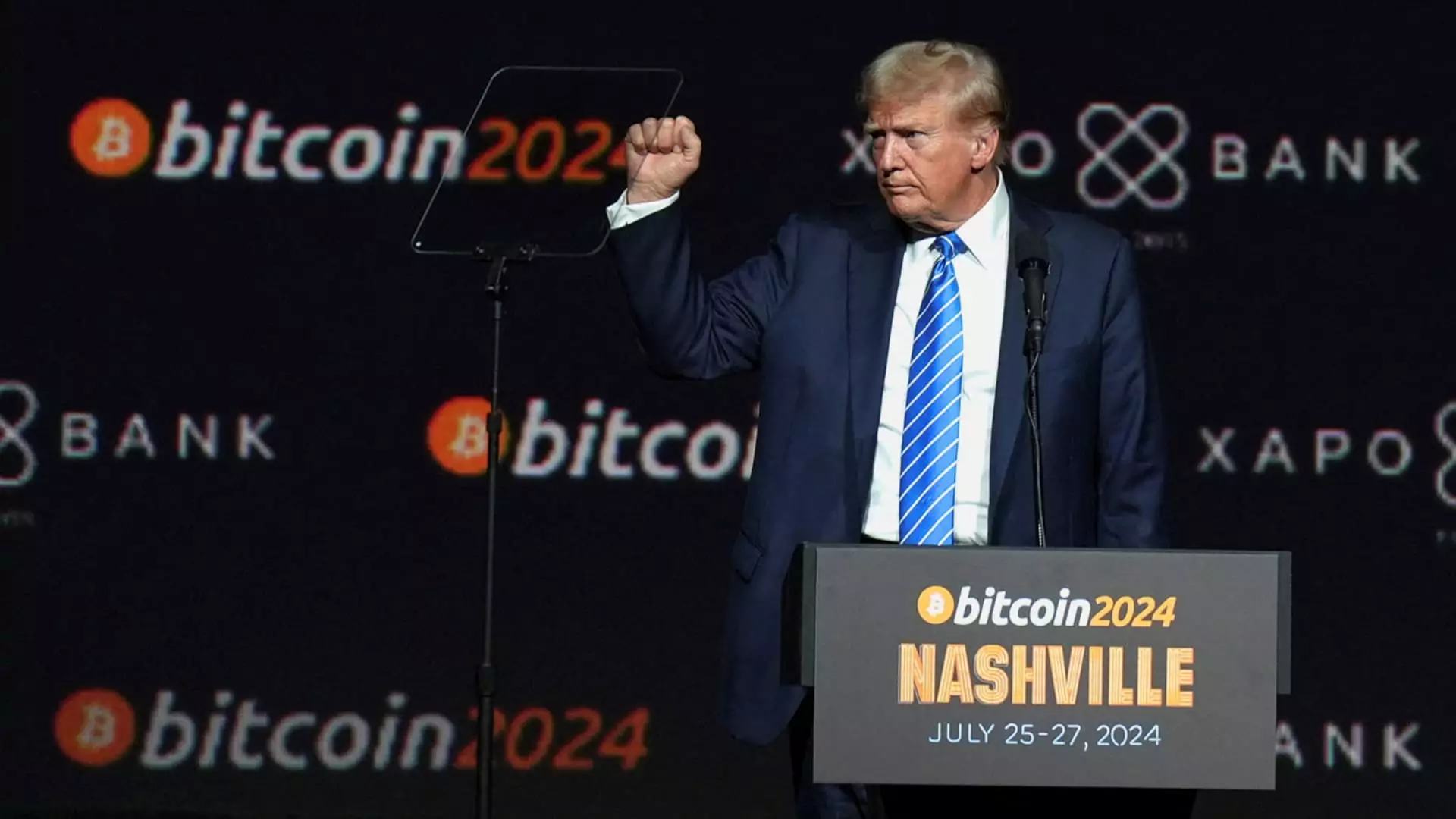In an ambitious pivot that could redefine the landscape of financial services, Trump Media recently announced a staggering $2.5 billion raise aimed at expanding its crypto treasury holdings. While the news sent the company’s shares tumbling by about 10%, the implications of this move are profound. As the tide of cryptocurrency continues to swell, this bold shift underscores a significant intersection of politics, finance, and technology—and there’s more to it than meets the eye.
A Bold Financial Experiment
Trump Media’s decision to allocate a large portion of its treasury to Bitcoin is not just about diversification; it’s an audacious statement of intent. By positioning Bitcoin at the center of its financial strategy, the company aims to escape the traditional confines of the financial system, which they claim discriminates against conservative entities. This gambit, framed as a “defensive strategy” by CEO Devin Nunes, presents Bitcoin as an “apex instrument of financial freedom.”
However, one must question whether this shift can truly liberate a company that’s been plagued by volatility. With shares already down nearly 30% this year and revenues scant at just $3.6 million, the move could ironically lead to further financial precarity. ‘Freedom’ cannot exist in a vacuum devoid of tangible business success; trumpeting such a high-stakes financial experiment without immediate returns leaves plenty of room for skepticism.
The Crypto Dance: Political Strategy Meets Financial Growth
In politically charged times, it’s no coincidence that this announcement comes during Bitcoin 2025, a significant gathering of digital asset enthusiasts. With prominent figures like Vice President JD Vance and the Trump family making an appearance, the fusion of political power and financial ambition is glaringly apparent. Trump’s increasing representation as the “crypto president” serves as both a brand differentiator and a rallying cry for a base that feels disenfranchised by mainstream financial institutions.
However, transforming a social media platform into a robust financial services company raises critical questions about expertise and transparency. The crypto market, riddled with regulatory complexities and volatility, demands deep understanding and adept handling. Can a company that has barely reported revenue create a meaningful legacy in the rapidly expanding world of digital finance?
Contradictions in a “Crown Jewel” Acquisition Strategy
While touting Bitcoin as the centerpiece of their future, Trump Media’s strategy already raises eyebrows amongst the trained financier crowd. The intent to hoard Bitcoin as a core treasury asset mirrors a trend seen in companies like MicroStrategy, yet the comparison falls short when you examine their operational history. Michael Saylor’s firm is built on a framework of technology and intelligence with proven financial performance; in stark contrast, Trump Media is still carving out its niche in a highly competitive space.
Additionally, one must analyze what it means to be a “crown jewel” in a portfolio filled with investment vehicles. The plan to further intertwine politics with finance—with products aimed at conservative investors—could inadvertently limit their audience and growth potential. By actively narrowing their market scope, they risk alienating a broader demographic that values financial soundness over political alignment.
The Regulatory Minefield Ahead
The partnership with Crypto.com to create diverse investment products may seem like a savvy move, but it is fraught with regulatory hurdles. The recent testimonies from crypto leaders on Capitol Hill regarding “debanking” illustrate a pressing challenge. With the Biden administration’s ongoing scrutiny of the cryptocurrency sector, navigating this minefield will not only require astuteness but also the courage to adapt rapidly to change.
On top of that, Trump’s executive order to create a federal Bitcoin reserve seems more symbolic than practical. Can we trust a firm creating a crypto stockpile amidst an administration skeptical of crypto? This skepticism further affirms the need for financial independence, yet it puts Trump Media in a precarious position where effective governance and adaptability are critical for success.
Is this the New Normal for Conservative Valuations?
Finally, the adoption of Bitcoin as a treasury strategy by Trump Media reflects a broader trend among conservative-aligned businesses attempting to break away from “financial censorship.” As the financial landscape evolves, the question arises: will this model represent the future of conservative valuations in corporate America? As mainstream investors become acutely aware of these dynamics, companies that fail to balance both profitability and ideological positioning risk losing ground.
Trump Media’s bold steps into the Bitcoin arena certainly leave much to ponder, especially amidst growing skepticism about whether this pivot will yield the desired financial freedom. As cryptocurrencies gain traction, with substantial political implications intertwining, navigating these waters skillfully may spell success or doom for this unconventional venture.

